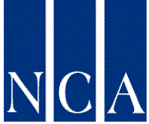 Scholars in language and social interaction study face-to-face, oral conversations. However, some are turning their attention toward Internet-based conversation. In this panel, entitled, “Language & Social Interaction Research into Internet-Mediated Communication,” presenters discussed the relationship between language, social interaction, and conversations on the Internet.
Scholars in language and social interaction study face-to-face, oral conversations. However, some are turning their attention toward Internet-based conversation. In this panel, entitled, “Language & Social Interaction Research into Internet-Mediated Communication,” presenters discussed the relationship between language, social interaction, and conversations on the Internet.
The major question here is whether (1) the medium drives the character of the conversation or (2) digital conversation is relatively similar to face-to-face conversation. Researchers studied deliberative discussion groups, synchronous discussion boards, sites for virtual meetings, online bulletin boards, chat rooms, and asynchronous community sites.
In sum, these papers suggest that even though online conversations are filled with interruptions and miscommunication, they can provide a valuable space to create community and share group stories. Some of the major themes discussed are below:
- What Counts as a Response? Analyzing Narratives and Discerning Response Patterns in Asynchronous Online Discussion Groups
Laura Black (Ohio University)
Language and Social Interaction scholars often study personal narratives, conversational storytelling, cultural communication, and conflict termination strategies. Online discussions are challenged because of issues of time, nonverbal cues, conversational norms, identity, and the communication’s visual display. The question for us is how to analyze asynchronous online discussions. Threaded and non-threaded discussions create conversation structures that may or may not reflect the actual pattern of communication. - Co-Orientation Without Co-Presence: Collaboration in Computer Chat
Kris Markman (Univ of Memphis)
The order and flow of conversations in chat rooms are often controlled by the medium, rather than the participants. In many cases, the medium interrupts the conversation, reminding us that the conversation is at once digital and not interpersonal. A cool technique in this study follows keystrokes during chat to demonstrate the timing of responses in the conversation. Comment repetition focuses the conversation, but it also extends the decision-making time - CHAMELEON: Individual and Community Ethos on the Internet
Julie Woodbury (Hamline University)
Conversation and online community allow people to perform an identity that they might not otherwise. Storytelling of everyday life can flourish in online communities. - From Old South to New Media: Vernacular History, Narrative, and Conversation in the Memory Book Cyber-Museum
Patricia G. Davis (University of North Carolina, Chapel Hill)
The cyber-museum provides broader knowledge and shapes language more than the physical museum ever could. Physical museums limit the discussion. Yet, websites surrounding museum displays can create and foster a discussion and conversation that can advance knowledge and develop a site for the archiving of narratives that would otherwise be lost.
How does the digital space of the Internet help and hinder conversation? Share your thoughts here.

What are your thoughts?